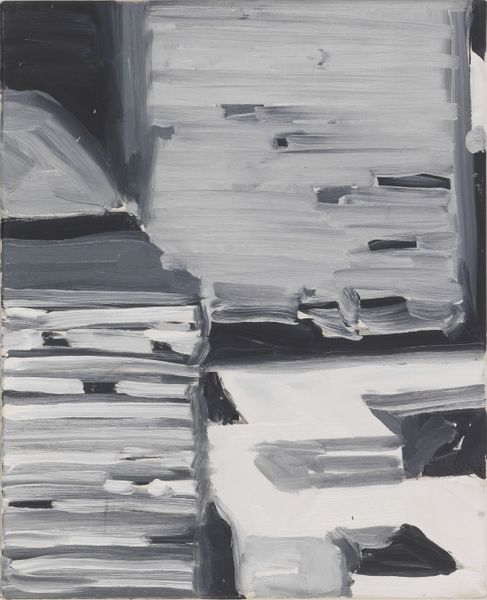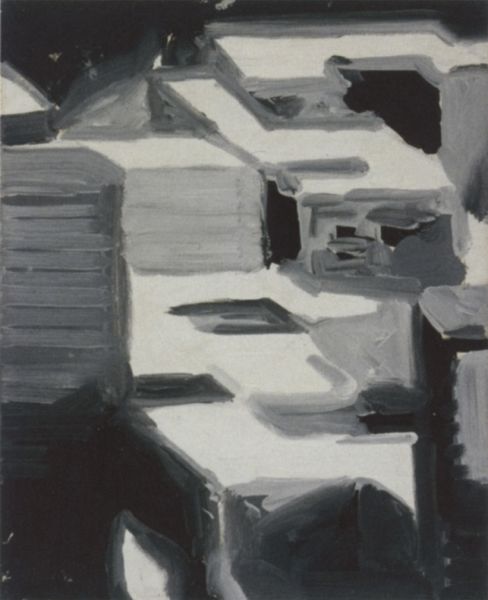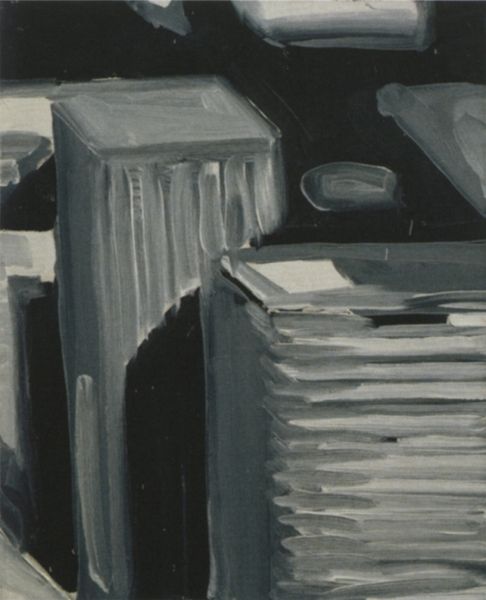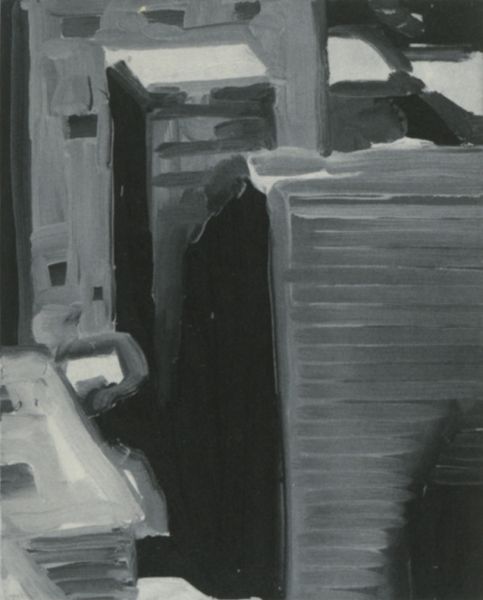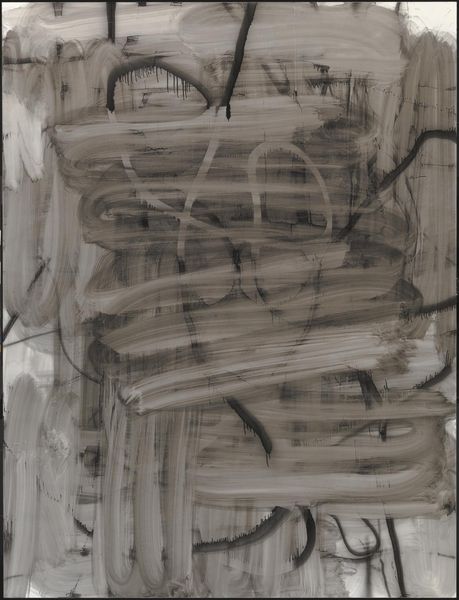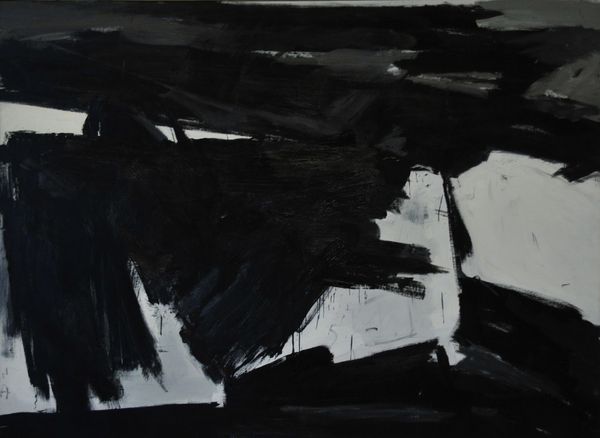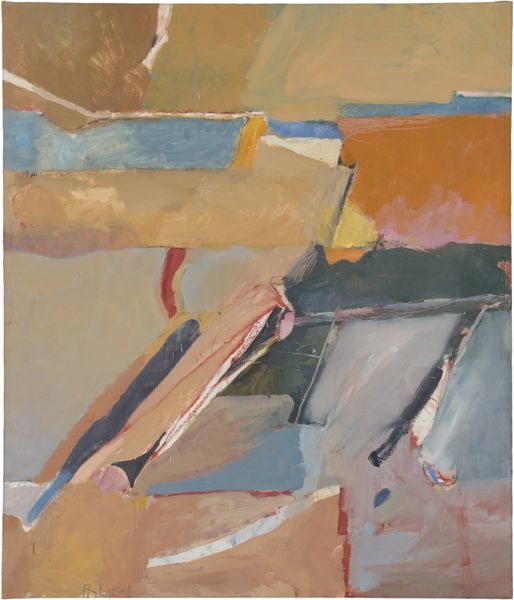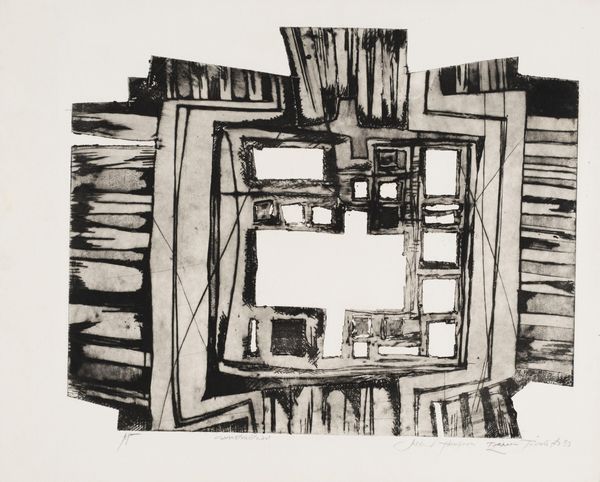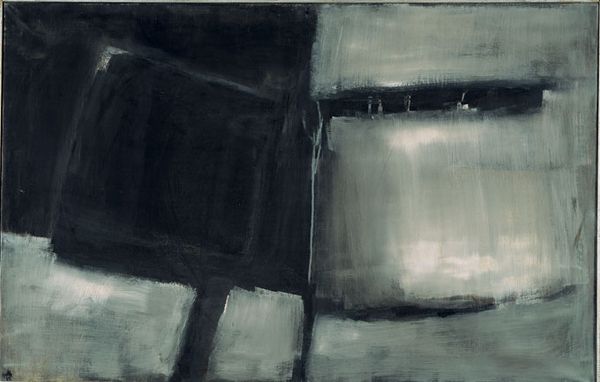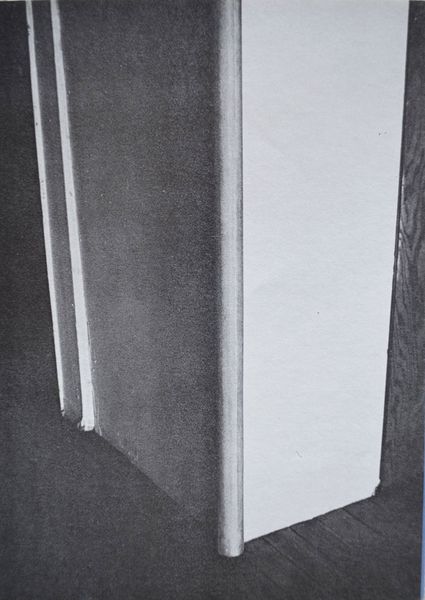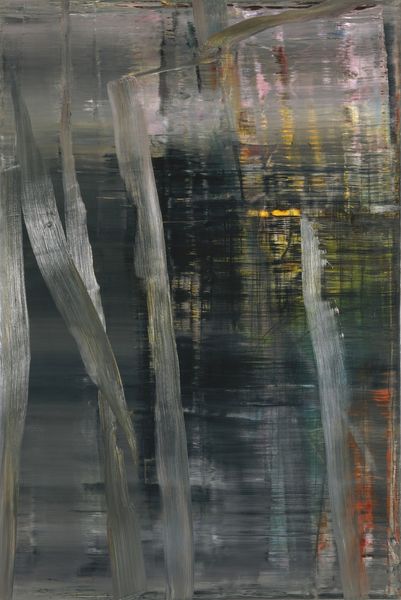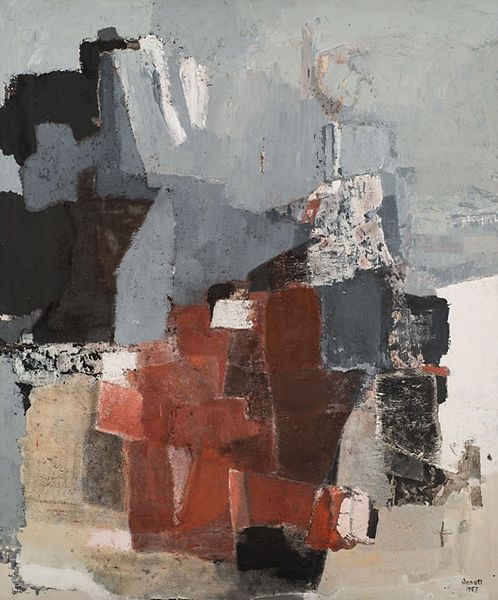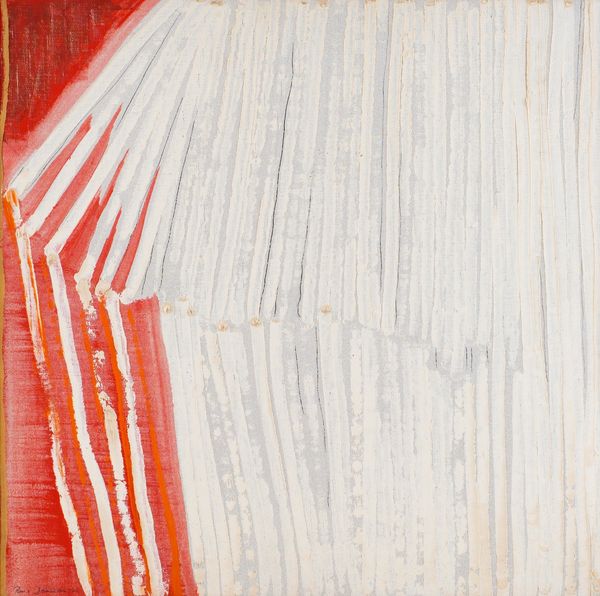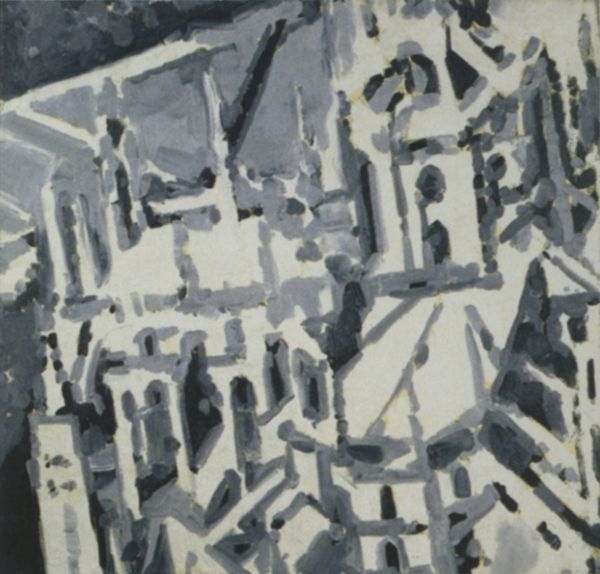
painting, acrylic-paint
#
abstract-expressionism
#
painting
#
acrylic-paint
#
geometric
#
capitalist-realism
#
abstraction
#
cityscape
#
modernism
Copyright: 2019 Gerhard Richter - All Rights Reserved
Curator: Immediately striking, isn't it? The harsh angles and monochromatic palette. Editor: Harsh is one word, I was just thinking oppressive. It's almost claustrophobic despite the implied vastness of a cityscape. Curator: Indeed. This acrylic-paint rendering on canvas is titled "Townscape", crafted by Gerhard Richter in 1968. The city becomes almost brutal in its abstraction. Editor: And notice the surface, how slick and almost industrial the acrylic feels compared to oil. What statement do you think Richter was trying to make about the modern industrial landscape with that choice? It clearly resonates with a mechanized or mass-produced reality. Curator: Interesting observation! By the 1960s, the use of acrylics certainly signaled a break from traditional painting techniques. Acrylic offered faster drying times and allowed for smoother surfaces, aligning perhaps with the streamlined aesthetic often associated with modernism and the very *idea* of a rapidly constructed, efficiently planned urban space. Editor: But efficient for whom? Those stark black and white planes remind me of Le Corbusier's urban planning, beautiful in theory, alienating in practice. The labor involved in constructing such monolithic forms often gets overlooked, don't you think? The human cost buried beneath the concrete. Curator: That tension is certainly palpable. The formal elements – the composition's starkness, the limited tonal range – contribute to the overwhelming sensation. He emphasizes geometric shapes devoid of human presence, leaving the viewer to contemplate the alienation that can occur within such environments. It highlights architecture that is for profit rather than the human. Editor: Precisely, the dehumanization. So, in that sense, the artist really draws the viewers into asking these deeper social and class related questions, about what cityscapes and labor might represent at the time and how consumerism impacts the field. Curator: Agreed, the piece operates on several levels simultaneously. It gives its monochromatic composition a surprising amount of power, doesn't it? Editor: Absolutely, and it leaves you with this lingering question about the materials that are literally and figuratively embedded in society's constructions, our world.
Comments
No comments
Be the first to comment and join the conversation on the ultimate creative platform.
